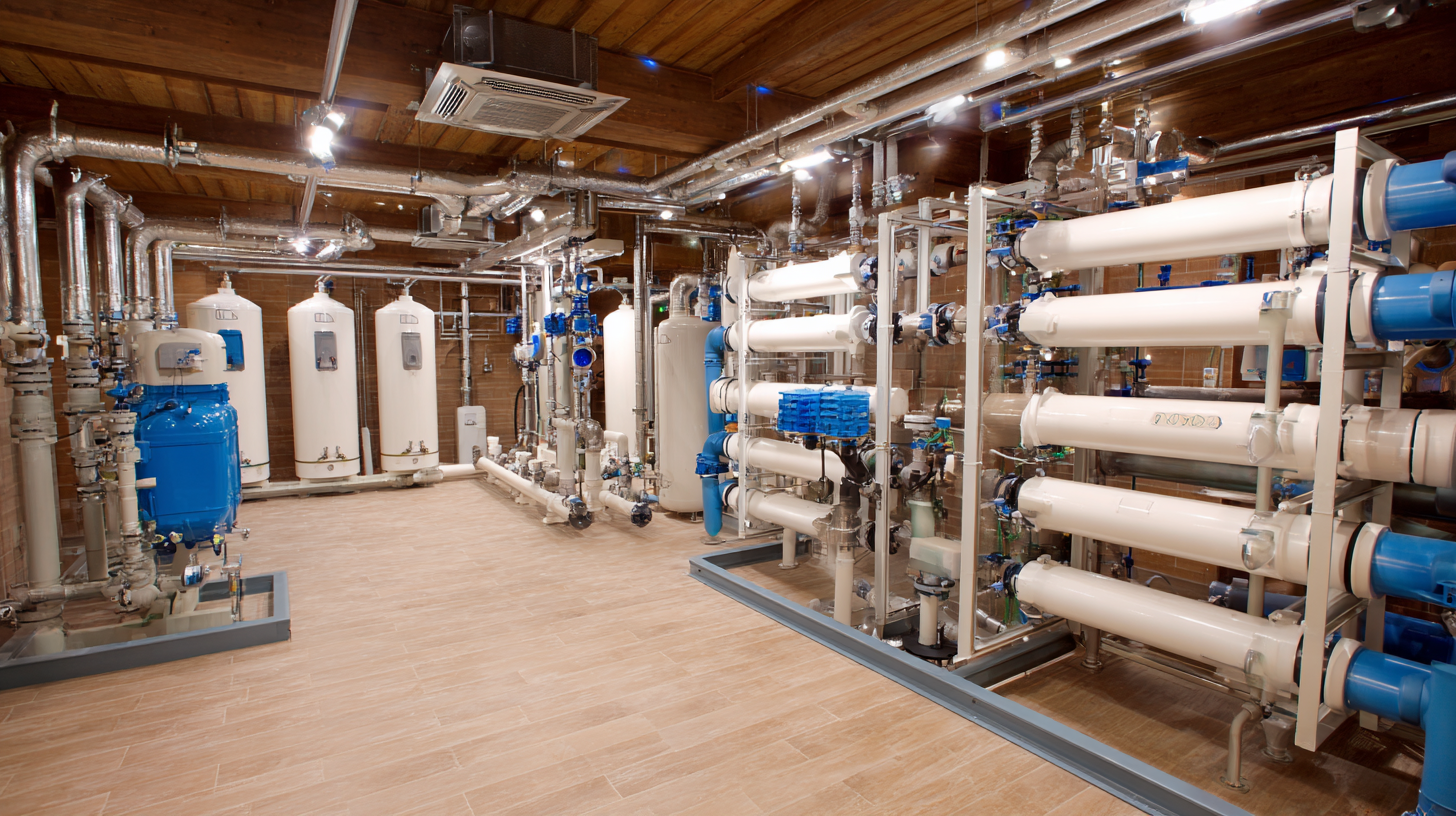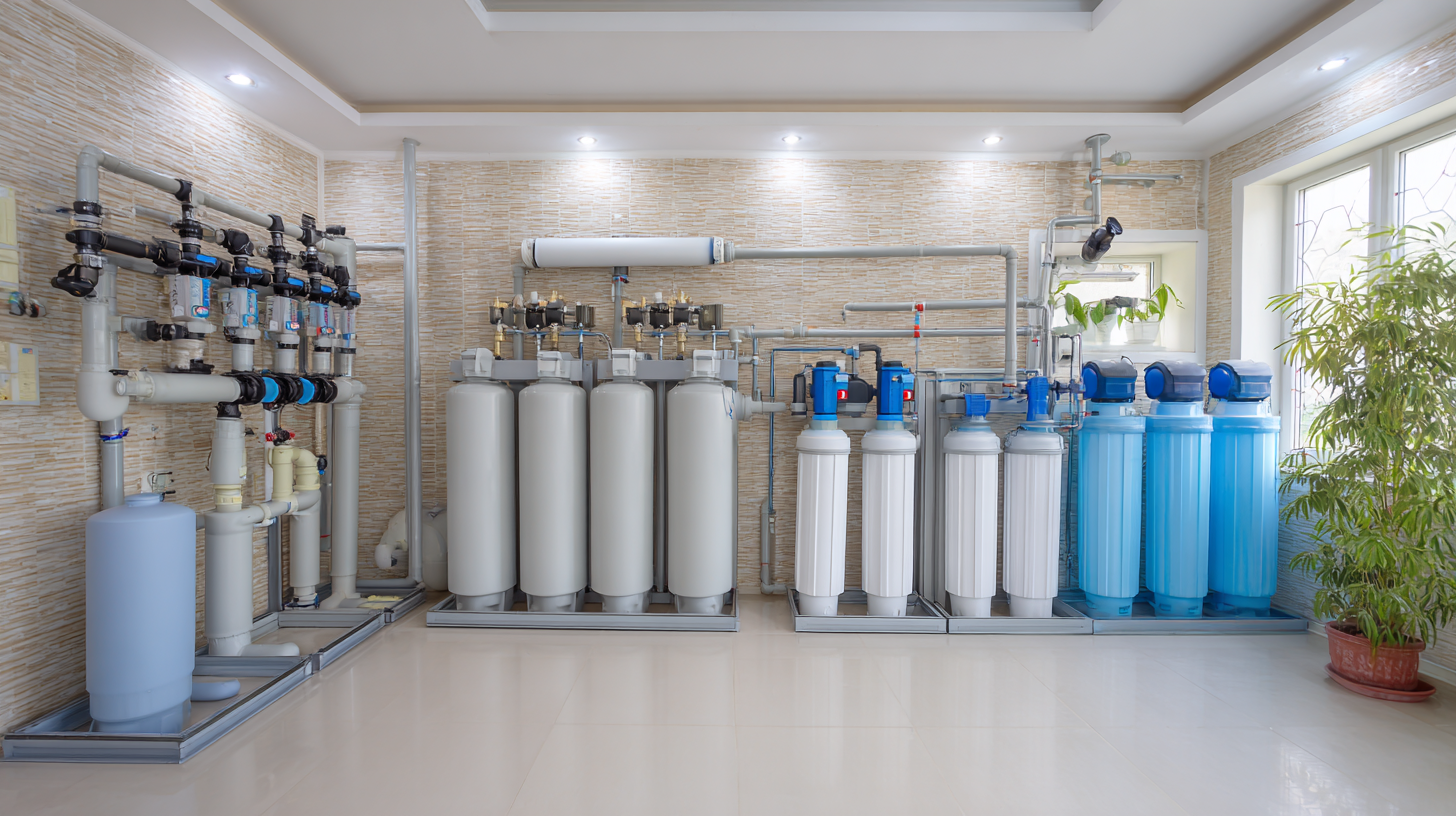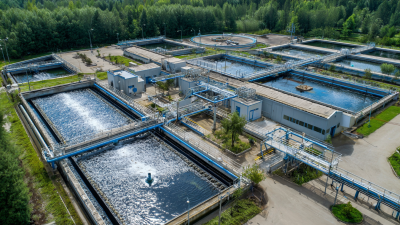Transforming Home Water Quality: The Ultimate Guide to Water Treatment Plants for Every Household
 As water quality becomes an increasingly pressing issue for households across the globe, the adoption of a
water treatment plant for home use is gaining momentum. According to the
World Health Organization, over
2 billion people currently lack access to safe drinking water,
highlighting the critical need for effective home water purification systems. With contaminants such as
lead, chlorine, and microbial pathogens frequently found in
tap water, families seek reliable solutions that ensure the safety of their water supply. The market for
home water treatment solutions is projected to reach
USD 36 billion by 2025, driven by heightened consumer
awareness and regulatory pressures. This ultimate guide will explore the various types of
water treatment plants designed for households, their benefits, and
how to select the most suitable system to safeguard your family's health and well-being.
As water quality becomes an increasingly pressing issue for households across the globe, the adoption of a
water treatment plant for home use is gaining momentum. According to the
World Health Organization, over
2 billion people currently lack access to safe drinking water,
highlighting the critical need for effective home water purification systems. With contaminants such as
lead, chlorine, and microbial pathogens frequently found in
tap water, families seek reliable solutions that ensure the safety of their water supply. The market for
home water treatment solutions is projected to reach
USD 36 billion by 2025, driven by heightened consumer
awareness and regulatory pressures. This ultimate guide will explore the various types of
water treatment plants designed for households, their benefits, and
how to select the most suitable system to safeguard your family's health and well-being.
Understanding the Importance of Water Quality in Household Health and Safety
Water quality is an essential component of household health and safety, influencing not only the taste and appearance of drinking water but also the well-being of the family. Contaminated water can harbor harmful pathogens, chemicals, and heavy metals that pose significant health risks, especially to vulnerable groups such as children, the elderly, and individuals with compromised immune systems. Ensuring access to clean water is paramount; it reduces the likelihood of waterborne diseases and contributes to overall physical health, allowing families to thrive.
Moreover, poor water quality can lead to long-term safety concerns. For instance, prolonged exposure to lead from corroded plumbing can result in neurological issues and developmental delays in young children. Households must recognize that the quality of their water sources directly correlates with their safety and health. By investing in effective water treatment solutions, families can mitigate these risks, ensuring their water is not only palatable but also safe for consumption and daily use. Understanding the significance of water quality fosters proactive measures, empowering households to make informed decisions for a healthier living environment.
Types of Water Treatment Technologies: Which One Is Right for You?
When considering the optimal water treatment technologies for a household, it’s essential to understand the variety of available options and their respective benefits. According to a report by the American Water Works Association (AWWA), about 10% of U.S. households rely on private wells, making understanding water treatment crucial for avoiding contaminants such as bacteria and heavy metals. Technologies like reverse osmosis systems are noted for their effectiveness in filtering out impurities, with studies showing they can remove up to 98% of common household contaminants.
Another popular option is activated carbon filters, which have been shown to effectively reduce chlorine, VOCs, and other organic compounds. The National Sanitation Foundation (NSF) identifies that these systems can improve water flavor and odor significantly, making them a favorite among consumers. In fact, over 40% of U.S. households utilize some form of carbon filtration technology according to recent industry trends, highlighting the growing awareness of water quality's importance. Choosing the right technology depends on specific household needs, water sources, and existing contaminants, ensuring that each family can enjoy clean and safe drinking water.
Types of Water Treatment Technologies
Key Indicators of Water Quality: Testing Your Home’s Water Supply
When it comes to ensuring that your household water supply is safe and potable, understanding key indicators of water quality is essential. The Environmental Protection Agency (EPA) identifies several primary contaminants that can affect water quality, including lead, bacteria, and nitrates. For instance, data from the EPA indicates that nearly 15% of community water systems have reported lead levels exceeding the action level of 15 parts per billion, significantly raising health concerns for families relying on such supplies.
Testing your home's water supply can help you identify any potential risks. Homeowners should consider utilizing certified water testing kits that analyze for various pollutants and microorganisms. The CDC highlights that water testing for bacteria, particularly E. coli, is critical since the presence of harmful bacteria can lead to serious gastrointestinal illnesses. Regular testing not only ensures compliance with health standards but also empowers homeowners with knowledge about their water quality. A report by the American Water Works Association emphasizes that the upfront investment in water testing can save households from costly health issues down the line, making it a vital practice for every household.

Cost-Benefit Analysis: Investing in a Home Water Treatment Plant
Investing in a home water treatment plant can yield significant benefits, enhancing both health and lifestyle by ensuring access to safe and clean drinking water. By analyzing the initial cost against the long-term advantages, homeowners can recognize its value. For instance, the reduction in medical bills due to waterborne illnesses and the savings from buying bottled water can offset the installation and maintenance costs of such systems. A thorough cost-benefit analysis not only includes financial savings but also considers the intangible benefits of better-tasting water and peace of mind for families.
Moreover, the environmental impact is a crucial factor in this investment decision. Utilizing a home water treatment plant reduces plastic waste from bottled water and lessens the carbon footprint associated with transporting bottled water. By choosing sustainable practices, homeowners contribute to a healthier planet while enhancing their domestic water quality. In this light, the investment in water treatment technologies emerges as not just a personal health decision, but a conscious choice towards environmental responsibility and sustainability.
Maintenance and Upkeep: Ensuring Long-Term Efficacy of Water Treatments
 Maintaining a home water treatment system is crucial for ensuring the quality and safety of drinking water. Regular checks on filters, membranes, and other critical components can prevent inefficient water purification and extend the lifespan of the system. Homeowners should establish a maintenance schedule that includes replacing filters according to manufacturer guidelines, monitoring pressure levels, and inspecting for leaks. These routine practices not only enhance the system’s performance but also safeguard against potential contaminants entering the water supply.
Maintaining a home water treatment system is crucial for ensuring the quality and safety of drinking water. Regular checks on filters, membranes, and other critical components can prevent inefficient water purification and extend the lifespan of the system. Homeowners should establish a maintenance schedule that includes replacing filters according to manufacturer guidelines, monitoring pressure levels, and inspecting for leaks. These routine practices not only enhance the system’s performance but also safeguard against potential contaminants entering the water supply.
In addition to routine maintenance, periodic professional assessments can help identify any underlying issues that may not be apparent during regular use. An expert can provide insights into system upgrades or modifications that could improve efficiency. Homeowners should also stay informed about local water quality reports and potential changes in source water conditions, as these can affect the effectiveness of their treatment systems. By proactively managing these factors, households can ensure their water treatment plants continue to deliver clean, safe water for years to come.
Related Posts
-

Understanding the Essential Steps in the Wastewater Treatment Plant Process
-

The Ultimate Guide to Choosing the Right Centrifugal Pump for Your Needs
-

Transforming Industrial Waste Water Treatment Solutions at the 138th Canton Fair 2025 for a Sustainable Future
-

Innovative Waste Water Systems Transforming Urban Water Management for Sustainable Development
-

Exploring Innovations in Package Wastewater Treatment Plants at the 138th Canton Fair 2025
-

Innovative Approaches to Effective Waste Water Treatment for a Sustainable Future


